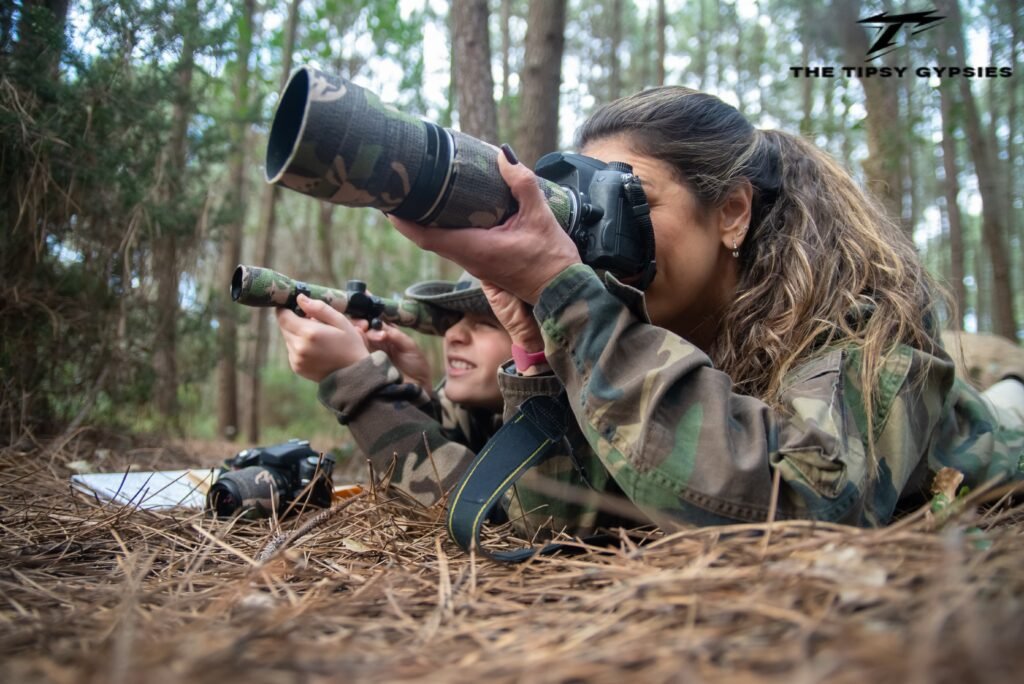Tarnplanen are camouflage tarpaulins, strong and weatherproof covers made to protect people and equipment while blending into natural or tactical surroundings. The name comes from German, where Tarn means camouflage and Planen means tarpaulins. In simple terms, a tarnplane is any tarp made from durable materials like polyethylene, polyester, nylon, vinyl, or canvas, printed or dyed with patterns that match a specific terrain. They are widely used for camping, hunting, wildlife photography, military operations, and any activity where you need protection from the weather while staying hidden.
Understanding Tarnplanen in Context
Tarnplanen are made to serve two key roles, keeping you protected from the elements and helping you stay hidden. Unlike ordinary tarps that often come in bright or solid colors, camouflage tarps are created with patterns and colors that blend into the natural surroundings. This can mean green and brown for woodland, beige and tan for desert, white for snow, or grey for urban settings.
They come in many weights and designs, from ultralight trekking sheets to heavy-duty industrial covers. While their primary role is to shield against the elements, their camouflage design adds extra benefits for both recreational and professional use.
The History and Evolution of Camouflage Tarps
Camouflage has been part of human survival for thousands of years. Ancient hunters covered themselves with animal skins or plants to blend into the environment. In modern times, camouflage became a studied science during World War I, when artists, scientists, and military planners developed disruptive patterns for uniforms, weapons, and equipment.
Camouflage tarps became popular when armies started using them as shelter halves and equipment covers with printed patterns. The German Zeltbahnen and Swiss Militärblachen are famous examples, serving as tents, rain covers, and concealment sheets. Over time, printing technology improved, allowing more detailed, environment-specific designs.
Today’s tarnplanen are made from lighter, stronger, and more weather-resistant materials compared to older canvas versions. Patterns are now digitally designed and printed with great accuracy, making them highly effective in environments from dense forests to open deserts and snowy mountains.
Main Materials Used in Tarnplanen
The choice of material affects a tarp’s weight, durability, pack size, and waterproof ability. Knowing the differences will help you pick the best one for your needs.
Polyethylene (Poly Tarps)
Made from woven high-density polyethylene with a laminated coating, these are affordable, waterproof, and strong. UV-treated poly tarps can last years outdoors, while untreated ones can break down quickly under sunlight. They are fully waterproof when new and resist tearing well.
Polyester or Nylon with PU or Silicone Coatings
Popular among hikers and bushcrafters because they are lightweight and pack small. PU-coated fabrics are easier to repair and seal, while silicone-coated ones (silnylon or silpoly) shed water effectively and resist wear. Waterproof ratings are measured in hydrostatic head (for example, 1,500 mm), showing how much water pressure they can withstand.
Vinyl-Coated Polyester
A heavy-duty choice with excellent tear resistance, long UV life, and total waterproofing. Often used for industrial or marine work, but heavier to carry.
Canvas and Polycotton
Breathable and quiet, making them great for shade and reducing condensation. Treated canvas can resist water, mildew, and sun damage, but it needs more care and is heavier than synthetic options.
Waterproofing and Performance
The waterproof level depends on both material and construction. Poly and vinyl tarps rely on their laminated surface, while coated fabrics have specific waterproof ratings. For camping shelters, a rating of 1,500 to 3,000 mm is good for most weather. Higher ratings are better for extreme conditions.
Seam construction matters. Heat-welded or taped seams are fully waterproof, while stitched seams may need seam sealer for extra protection.
Common Camouflage Patterns
Tarnplanen designs match different landscapes:
- Flecktarn: German five-color woodland pattern, great for mixed forests.
- M90: is a Swedish camouflage design with a sharp, splinter-like pattern. It works well in forested and open plain areas, and there are special versions adapted for desert and snowy conditions.
- Woodland: U.S. four-color pattern, effective in many wooded areas.
- Desert Camo: Tan and brown shades for dry areas.
- Snow Camo: White and grey for winter concealment.
Choosing a design that matches the dominant colors of your location makes the tarp more effective.
Main Uses of Tarnplanen
Camping and Bushcraft
Used as rain covers, lean-to shelters, ground sheets, and windbreaks. Their camouflage helps keep camps less visible, useful for stealth camping.
Hunting and Wildlife Photography
They help hide human shapes and movements, letting you get closer to wildlife without being noticed. They also protect equipment from rain and sun.
Tactical and Military
Used to hide vehicles, gear, and positions while offering shelter in the field.
Filmmaking and Events
Used as natural-looking backgrounds or to hide equipment in outdoor shoots.
How to Choose the Right Tarnplane
When buying a tarnplane, think about:
Environment – Match the pattern and color to your surroundings.
Size – Small for solo use, large for group shelter or gear protection.
Material – Choose poly for cost savings, coated nylon or polyester for light weight, vinyl for heavy-duty needs, or canvas for breathability.
Features – Look for reinforced edges, multiple tie points, UV protection, and waterproof coatings.
How to Set Up a Tarnplane
A good setup keeps you dry and safe. An A-frame over a ridgeline is quick and stable. Lean-to designs give airflow and open views. In storms, a low and sloped pitch sheds water and resists wind.
Use prusik knots or adjustable clips for easy adjustments. Always stake the windward side and add a drip line to stop rain from running under the tarp.
Care, Maintenance, and Storage
Wash with mild soap and water. Always dry completely before storing to avoid mildew. Store in a cool, dry place. Reapply waterproof sprays to coated fabrics when needed, and fix holes quickly with patches or tape.
Avoid long sun exposure for untreated poly tarps. When using vinyl tarps in cold weather, avoid folding them sharply, as this can cause the material to crack.
Environmental Considerations
Poly tarps can be recycled in some places if marked with codes #2 (HDPE) or #4 (LDPE). Vinyl is harder to recycle due to mixed materials. Canvas and polycotton break down naturally but may contain chemicals.
Choosing a long-lasting tarnplane and taking care of it reduces waste and is better for the environment.
Real-Life Example
On a cool autumn morning, a wildlife photographer sets up a Flecktarn-pattern tarp between two trees. The muted pattern blends with fallen leaves. The tarp keeps gear dry, hides movement, and within an hour, a deer walks into view. The photographer captures perfect shots without disturbing the animal.
Conclusion
Tarnplanen are more than patterned covers. They are reliable tools for shelter and concealment in outdoor life. Choosing the right material, size, and design ensures you stay protected while blending into your surroundings. With proper care, a quality tarnplane will serve you for many years, making every trip safer, quieter, and more comfortable.
Frequently Asked Questions ( FAQs )
What is a Tarnplane?
A tarnplane is a camouflage tarpaulin made from durable materials like polyethylene, polyester, nylon, vinyl, or canvas. It is designed to protect from rain, sun, and wind while blending into the surrounding environment.
What is the main purpose of a Tarnplane?
The main purpose of a tarnplane is shelter and concealment. It protects people, gear, and vehicles from weather and hides them using patterns that match the local terrain.
Which materials are best for Tarnplanen?
For light weight and portability, coated nylon or polyester is best. For long-lasting durability, vinyl-coated polyester is ideal, while canvas is good for breathability in warm climates.
How do you set up a Tarnplane effectively?
Set up a tarnplane by stretching it over a ridgeline or between anchor points, then stake or tie it securely. Keep the wind-facing side low and angled to block rain and wind.
How do you maintain a Tarnplane for long use?
Clean a tarnplane with mild soap and water, dry it fully before storage, and keep it in a cool, dry place. Repair holes quickly and reapply waterproof coating when needed to extend its life.






